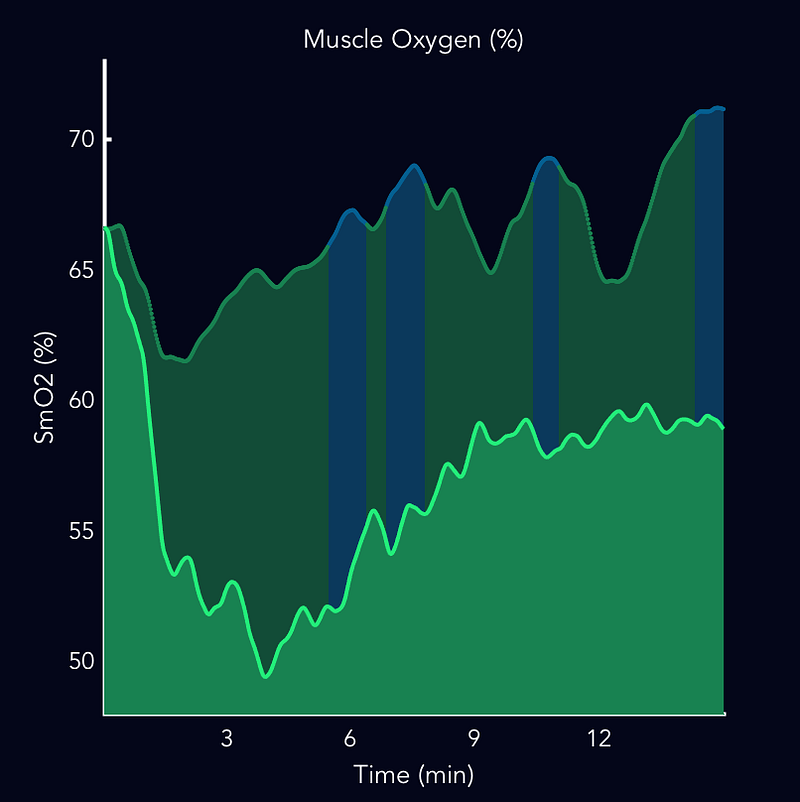
The Perfect Warm Up with Muscle Oxygen
Under-utilized and often overlooked, warm-up is one of the most important parts of any effective workout. Warming up properly allows an athlete’s body to adequately prepare for strenuous motion and prepares cardiovascular, respiratory, and nervous systems to fire in all the right ways. Furthermore, incorporating a solid warm-up routine into your workouts goes a long way in preventing injury, leading to better training consistency and improved strength and recovery.
We can use a Humon Hex to optimally warm-up and illustrate the way a proper warm-up can impact the body during a workout. The data in the screenshots below show a cyclist first, warming up effectively, followed by a workout in which she did not.
In the first plot, the cyclist followed the below protocol to make sure she was fully warmed up before her activity and improve the effectiveness of her workout:
1. To begin, remember the initial SmO2 value when you put on the Hex.
2. Start your warm up at a very low intensity and watch the SmO2 value so you can control the it from dropping a drastic amount.
3. Once you observe a rebound in the SmO2 value, allow the Hex to guide you so your SmO2 increases as much as possible. This may require slight adjustments in exercise intensity.
4. Progressively increase the intensity of your warm up, keeping an eye on the SmO2 perturbations. Try to keep it controlled so the value goes up. If it decreases rapidly your intensity is too high.
5. Once you plateau, add a few progressive accelerations to purposely drop the SmO2 value (50, 60, 75, 85% are practical efforts). After each acceleration, allow enough recovery time so SmO2 increases and you are clearing metabolites.
6. Once you reach the maximum SmO2 value you are finished. You will know you have reached maximum value because SmO2 will not increase any further.
7. Take note of that value. This value is what is identified as baseline SmO2 and you can use it as a reference point for your training session, whether that is endurance or intervals.

In the second plot below, you can see the SmO2 levels when the athlete warmed up (data from above), overlaid by another SmO2 plot when the same athlete did not perform a warm up and started the workout immediately. The SmO2 drops dramatically when the athlete does not warm up and never rises as high since she was pushing hard immediately. Here, you can understand the importance of providing a proper warm up to allow for high SmO2 to be available at the start of your workout.


